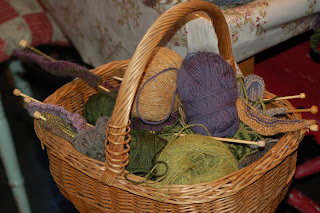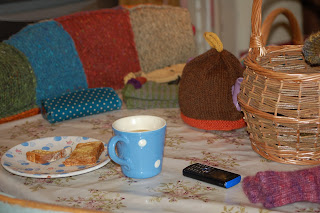Tanya Liddle
Knitter and Maker
17th October, 2012, Bentham
My socks being created!
Tanya grew up around a philosophy of ‘if
you can make it, you do!’ She grew up in a household of thrifty mentality,
with all hands on deck. When Dad decided to make a fireplace, Tanya was an able
assistant and when Dad decided to build a garage all the kids helped. When
Tanya was growing up they were the only household that had a homemade record
player! The inspiration to collect in case it would be useful one day was very
much prevalent and the desire to restore, rescue and make was the thrust of her
upbringing. Parents and grandparents modelled making working alongside one
another and Tanya thoroughly enjoyed the involvement. School did not bring out the best with regard
to needlework as it was to structured and restrictive. She would come home and
dress her doll beautifully but a D in her O’level sewing!
Tanya is a mum to seven children and a
grandmother too. She is married to Tony, ironically he is an area manager for a
large DIY superstore!
The high regard with which her upbringing
gave her for making is still very much maintained by Tanya as she loves to put
thought into creating something and giving part of herself. It is also
important to Tanya to pass on her skills and interests and she goes into to
school to demonstrate, knitting, weaving and other making. She loves to get
every child involved in some way to suit them and sees making as an excellent
outlet and good therapy.
Tanya takes her inspiration from the
countryside, the tones and hues of the hedgerows, heathers and woods captivate
and are captured in her work. She sources her wool and yarns locally and
distances herself from the ‘throw away’ mentality of society. Tanya expressed
art as being one’s own perception.
As I sit in her cosy kitchen sharing a warm
cuppa and home baking we are surrounded by crafted pots, jugs and many signs of
wonderful home making.








































